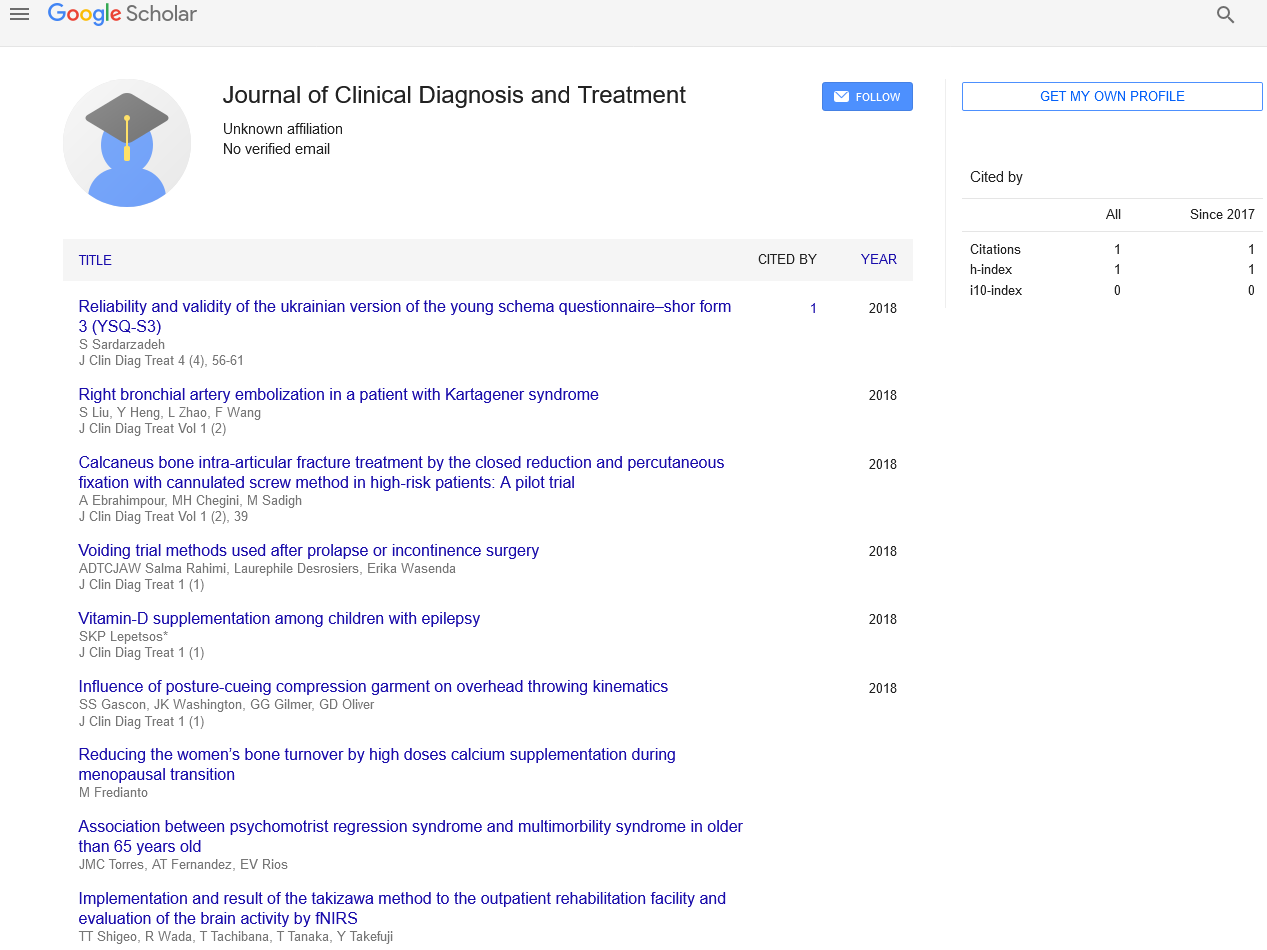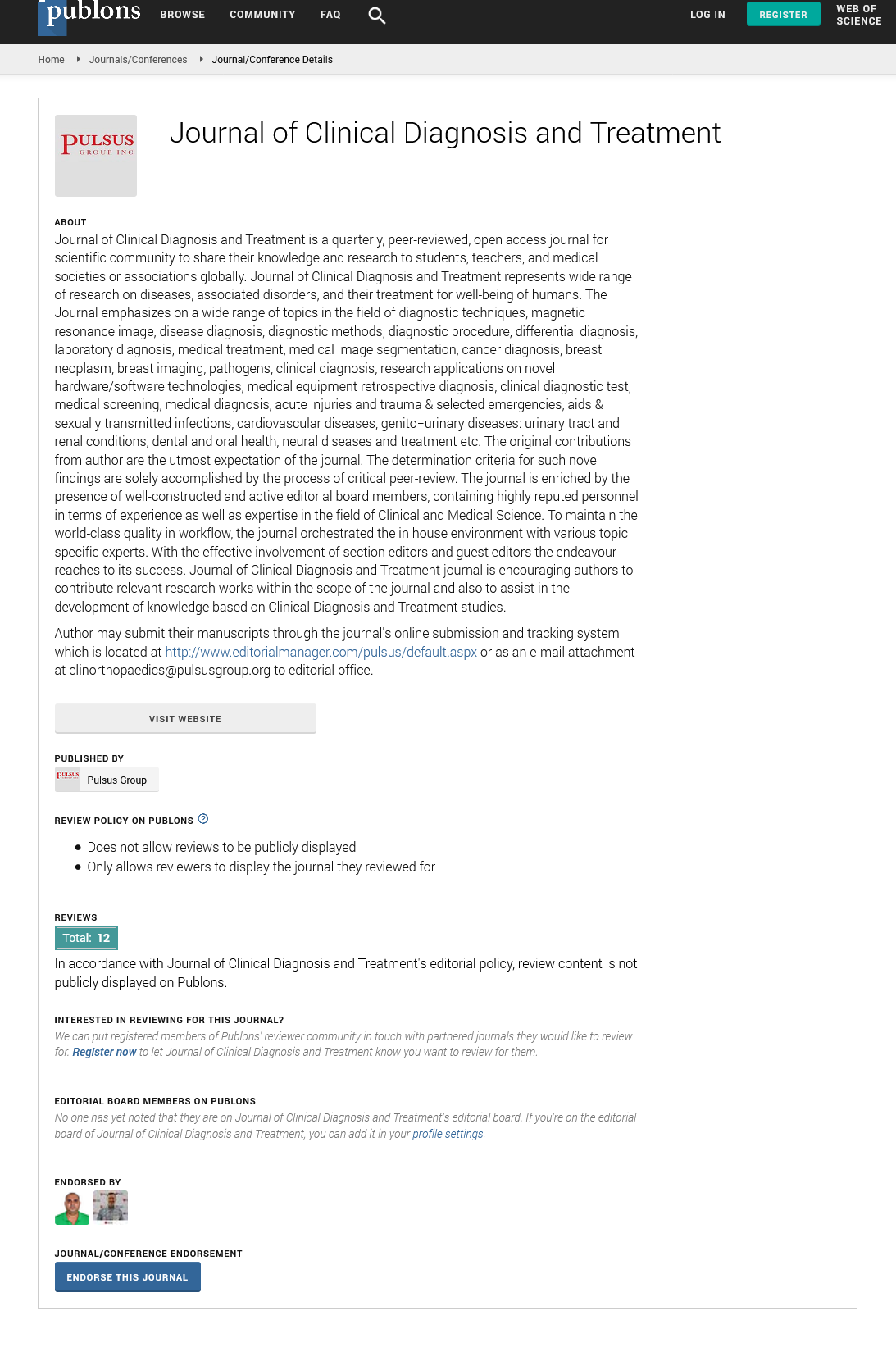Antiretroviral Drugs for cure and Prevention of HIV Disease in Adults
Received: 04-Sep-2021 Accepted Date: Sep 18, 2021; Published: 24-Sep-2021
This open-access article is distributed under the terms of the Creative Commons Attribution Non-Commercial License (CC BY-NC) (http://creativecommons.org/licenses/by-nc/4.0/), which permits reuse, distribution and reproduction of the article, provided that the original work is properly cited and the reuse is restricted to noncommercial purposes. For commercial reuse, contact reprints@pulsus.com
Abstract
New information and remedial alternatives warrant refreshed proposals for the utilization of antiretroviral drugs (ARVs) to treat or to forestall HIV disease in grown-ups. A board of specialists in HIV exploration and patient consideration met by the Global Antiviral Society-USA surveyed information distributed in peer-explored diaries, introduced by administrative organizations, or introduced as gathering abstracts at peer-explored logical meetings since the 2014 report, for new information or proof that would change past suggestions or their appraisals. Thorough writing look were directed in the PubMed and EMBASE data sets through April 2016. Suggestions were by agreement, and every suggestion was appraised by the strength and nature of the proof.
Keywords
Antiretroviral drugs; HIV disease; NRTIs; InSTI
Introduction
More up to date information support the broadly acknowledged proposal that antiretroviral treatment ought to be begun in all people with HIV disease with recognizable viremia paying little heed to CD4 cell count. Suggested ideal introductory regimens for most patients are 2 nucleoside switch transcriptase inhibitors (NRTIs) in addition to an Integrase Strand Move Inhibitor (InSTI). Other successful regimens incorporate nonnucleoside invert transcriptase inhibitors or supported protease inhibitors with 2 NRTIs. Proposals for extraordinary populaces and in the settings of pioneering diseases furthermore, attendant conditions are given. Purposes behind exchanging treatment incorporate accommodation, decency, rearrangements, and the expectation of potential new medication associations, pregnancy or plans for pregnancy, end of food limitations, virologic disappointment, or medication poison levels. Lab evaluations are suggested before treatment, and checking during treatment is suggested to evaluate reaction, antagonistic impacts, and adherence. Approaches are prescribed to improve linkage to and maintenance in care is given. Day by day tenofovir disoproxil fumarate/emtricitabine is prescribed for use as pre exposure prophylaxis to forestall HIV disease in people at high danger. When shown, post exposure prophylaxis ought to be begun at the earliest opportunity after openness. Commencement of ART is suggested quickly in the setting of intense HIV disease Commencement preceding the improvement of HIV immune response energy lessens the size of the idle HIV repository, diminishes insusceptible actuation, and may ensure against disease of focal memory T cells. Advantages are maximal during the initial not many weeks after HIV contamination yet are obvious up to the initial a half year after infection. 12-16 However, early treatment doesn’t forestall the foundation of the inactive HIV repository. Arranged cessation of early ART after a particular term of treatment isn’t suggested outside research settings; the advantages don’t continue and the resulting viral bounce back is related to expanded clinical occasions and the potential for transmission. Inception of ART in “world class regulators” (characterized as patients with affirmed HIV contamination also, tenacious imperceptible HIV RNA without ART) stays dubious. First class regulators may in any case profit from ART since they have more significant levels of insusceptible enactment and an expanded danger of cardiovascular infection and hospitalization contrasted and people accomplishing virologic concealment with ART.21 Initiation of treatment, notwithstanding, is suggested for tainted people who have tireless imperceptible viral burden without ART yet, have declining CD4 cell counts.
Antiretroviral specialists stay the foundation of HIV treatment and avoidance. All HIV-tainted people with distinguishable plasma infection ought to get treatment, with suggested starting regimens comprising of an InSTI in addition to 2 NRTIs. PrEP ought to be considered as a feature of a HIV counteraction methodology for in danger people. When utilized adequately, right now accessible ARVs can support HIV concealment and can forestall new HIV contamination. With these treatment regimens, endurance rates among HIV-tainted grown-ups who are held in care can move toward those of uninfected grown-ups.






